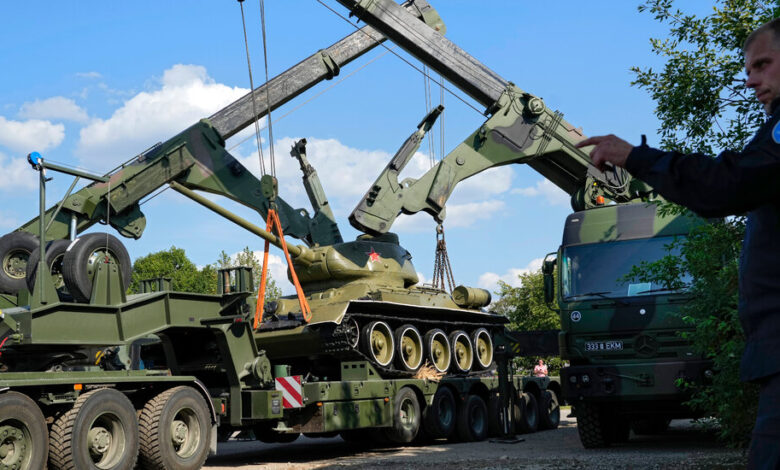Estonia says it repelled a major cyberattack claimed by Russian hackers.

Estonia said on Thursday that it had repelled the biggest wave of cyberattacks in more than a decade, unleashed shortly after the removal of a Soviet-era tank from a war memorial celebrating the Red Army on its border with Russia.
The Estonian government, one of Europe’s most robust supporters of Ukraine in its war with Russia, announced on Tuesday that it would remove all Soviet monuments from public spaces, describing them as “symbols of repression and Soviet occupation” that had led to “increasing social tensions.”
The cyberattacks, claimed by Killnet, a Russian hacker group, began on Wednesday soon after the Estonian military dismantled a war memorial on the bank of a river separating the Baltic nation from Russia in the city of Narva and began moving its centerpiece, a T-34 tank, to a museum in the capital, Tallinn.
The attacks, according to Luukas Ilves, Estonia’s under secretary for digital transformation at the Ministry of Economic Affairs and Communications, were the most severe since 2007, when the relocation of a Soviet monument known as the Bronze Soldier from the center of Tallinn to a war cemetery set off two nights of violent rioting and looting by ethnic Russians and ferocious cyberattacks that were widely blamed on Russia.
Estonia has a highly digitalized economy and a deep pool of people with digital skills, and it strengthened its cyberdefenses after the troubles in 2007. This week’s assault, Mr. Ilves said, “has gone largely unnoticed,” with websites remaining fully available “with some brief and minor exceptions.”
The Killnet hacker group is nominally independent but invariably chooses its targets in line with the priorities of the Russian state. It said it carried out the cyberassault in retaliation for the removal of the Soviet tank from the memorial, which Moscow has long insisted must be protected.
The same hacker group claimed a similar but more successful attack in June on state and private institutions in Lithuania after restrictions were placed on the transit of goods sanctioned by the European Union to Kaliningrad, a Russian territory on the Baltic Sea that is separated from the rest of the country and depends on Lithuanian railways and roads for supplies.
Ethnic Russians make up a large majority of the population of Narva, but they have so far remained calm despite incendiary statements by Russian officials and Russian-language news outlets. Some residents gathered around the dismantled memorial, laying flowers and lighting candles. But there were no reports of violence.
Estonia, Lithuania and Latvia have for years feuded with Russia and their own ethnic Russian populations over memories of World War II and the Soviet Union’s role in the defeat of Nazi Germany, which Russians remember with great pride but which Balts mostly remember as sealing their occupation by the Red Army. The three countries regained their independence in 1991 with the collapse of the Soviet Union, which had aligned with Hitler between 1939 and 1941 but later denounced all Baltic critics of Soviet rule as Nazis.
Referring to the removal of war memorials in Estonia and two other Baltic States, the Russian Foreign Ministry last week, in an echo of Russian propaganda against Ukraine, accused them of “neo-Nazi bacchanalia” and warned against “the formation of essentially neo-fascist states on the near borders of Russia.”
“What consequences this leads to, we have already seen in Ukraine,” the Foreign Ministry spokeswoman, Maria Zakharova, said.



